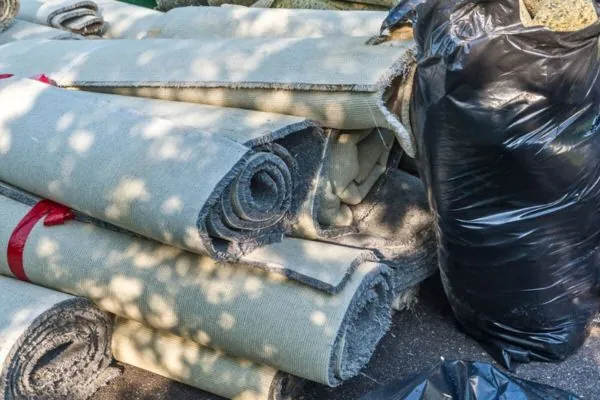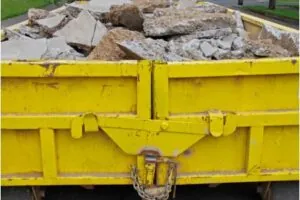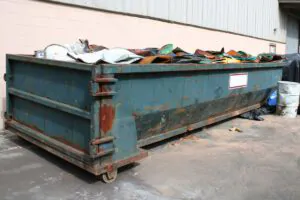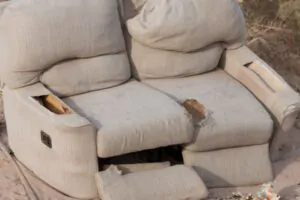Disposing of old carpet can feel overwhelming, especially when you are unsure how to do it responsibly. Many people simply roll it up and toss it in the trash, unaware of the impact this has on the environment. If you are in the process of upgrading your flooring, it is essential to know that there are better ways to dispose of carpets that do not contribute to landfill waste. From recycling to repurposing, there are options available that not only make disposal easier but also support a more sustainable lifestyle.
Whether you are tackling a renovation or simply replacing worn-out flooring, this guide is here to help you navigate the process with ease. You will discover efficient methods that align with your values, ensuring that your old carpet is handled in a way that is good for both your home and the planet.
Let’s explore these options together and find the best solution for your needs. By the end of this article, you will have all the tools and knowledge you need to dispose of your carpet in the most eco-friendly way possible.
Why Proper Carpet Disposal is Important

When it’s time to replace your old carpet, knowing how to dispose of the carpet properly is crucial. Many people overlook the impact that improper carpet removal and disposal can have on the environment and public safety. Responsibly disposing of your carpet not only helps reduce waste but also protects natural resources and prevents potential hazards.
Here are some reasons why proper carpet disposable should be done
Environmental Impact
Carpets are often made from synthetic materials that do not break down easily, leading to long-lasting pollution if they end up in landfills. These materials can release harmful chemicals into the soil and water, affecting local ecosystems. Learning how to get rid of carpets responsibly can reduce your environmental footprint. Recycling or repurposing your old carpet helps conserve resources and limits the energy needed to produce new materials.
Landfill Space
Landfills are already overflowing with waste, and carpets take up a considerable amount of space due to their size and bulk. When you remove old carpet and simply toss it into the trash, you are contributing to a growing problem. Carpet removal and disposal in landfills not only use up valuable space but also add to the strain on waste management systems. Instead, consider recycling or donating your carpet to minimize landfill use.
Safety Hazards
Old carpets can pose various safety hazards if not disposed of properly. Carpets can harbor allergens, dust mites, and even mold, which can be harmful to health, especially for those with respiratory conditions. When left in the open or improperly discarded, carpets can also become tripping hazards or breeding grounds for pests and even disease vectors. The safety concerns can be very important and are just another reason for proper disposal.
How to Dispose of Carpet Properly
Proper carpet disposal is essential for reducing waste and minimizing environmental impact. If you’re wondering how to get responsibly rid of the carpet, there are several options available beyond simply throwing it out. From recycling to repurposing, taking the time to explore these methods can make a significant difference.

Below are some effective methods to dispose of carpet properly.
Use a Carpet Recycling Service
Many carpets are made from materials like nylon, polyester, and wool, which can be recycled into new products. To use a carpet recycling service, check with your local waste management facility or find a specialized service in your area. They can guide you on how to dispose of your old carpet effectively through recycling, helping you make a positive environmental impact.
Donate Excess New Carpet
Many charitable organizations, such as Habitat for Humanity or local shelters, welcome donations of new or gently used carpet. By donating, you are helping others while ensuring that your excess carpet does not go to waste. This is an ideal solution for those who want to dispose of carpet in a way that benefits both the environment and those in need.
Hire a Junk Removal Service
These services handle the heavy lifting and ensure that the carpet is properly disposed of, often including recycling as part of their process. This is especially helpful for large-scale projects where you have significant amounts of carpet to remove. When selecting a junk removal service, ask about their disposal methods to ensure they align with your environmental goals.
Repurpose Excess Carpet in the Home
Repurposing excess carpet is a creative and sustainable way to give your old carpet a new life. Instead of discarding it, consider using carpet remnants for projects around the home.
For example, you can turn carpet pieces into area rugs, pet mats, or soundproofing materials. This not only reduces waste but also saves you money by repurposing materials you already have.
Proper Tools and Equipment for Carpet Removal

Removing old carpet requires more than just strength; having the right tools and equipment is essential to ensure the job is done safely and efficiently. Whether you are a DIY enthusiast or planning to hire professionals, understanding what tools are necessary can save you time and effort. By being well-prepared, you will make the process smoother and ensure a successful carpet removal and disposal experience.
Safety Equipment
Before starting any carpet removal project, safety should be your top priority as you make sure the right tools are available. Proper safety equipment protects you from potential hazards like sharp objects, dust, and allergens that are common in old carpets. Essential gear includes gloves to protect your hands from cuts and abrasions, a dust mask to prevent inhalation of fibers and particles, and knee pads to cushion your knees during prolonged periods of kneeling.
Carpet Removal Tools
Using the correct tools for carpet removal makes the job much easier and faster. A utility knife is essential for cutting the carpet into manageable strips, while a carpet kicker or knee kicker helps to detach the carpet from the tack strips. Pliers are useful for pulling up stubborn staples and tacks, and a pry bar helps lift the tack strips without damaging the floor underneath. Removing carpet correctly means it is easier to safely dispose of during cleanup.
Cleanup Tools
Once the carpet has been removed, the cleanup process begins. Proper cleanup tools are essential to leave your space tidy and ready for new flooring. A heavy-duty broom or shop vacuum will help clear away dust, dirt, and debris left behind from the carpet removal process. Large trash bags or bins are necessary for disposing of carpet scraps, padding, and any other waste. Containing old carpet scraps and fibers is a big part of safe cleanup and disposal.
Check Your Local Regulations for Carpet Disposal
Before you begin the process of carpet removal and disposal, it is essential to understand the local regulations that govern how to dispose of carpet in your area. Different regions have specific rules and guidelines that must be followed to ensure responsible disposal.

From recycling programs to commercial disposal requirements, being aware of these regulations can save you from potential fines and ensure that your carpet is disposed of in an environmentally friendly way.
Local Recycling Options
Many communities offer recycling programs that accept old carpets, making it easier for residents to dispose of carpets responsibly. These programs often collaborate with specialized recycling facilities that can break down carpet materials into reusable components. Some areas may even provide curbside pickup for recyclables, including carpets.
Commercial Disposal Regulations
If you are a business or contractor handling carpet removal and disposal on a larger scale, it is crucial to be aware of commercial disposal regulations. These regulations often differ from residential guidelines and may require specific permits, documentation, or disposal methods. For example, commercial entities might need to work with licensed waste disposal companies or follow strict recycling mandates.
Conclusion
Proper carpet disposal is not only a responsible choice but also a crucial step towards minimizing environmental impact and maintaining community well-being. Always check local regulations to ensure compliance and explore all available options to make the process as smooth as possible.
With the right approach and tools, you can handle your carpet removal and disposal with confidence, knowing you are making a positive difference. Thank you for taking the time to learn how to get rid of carpet responsibly!





